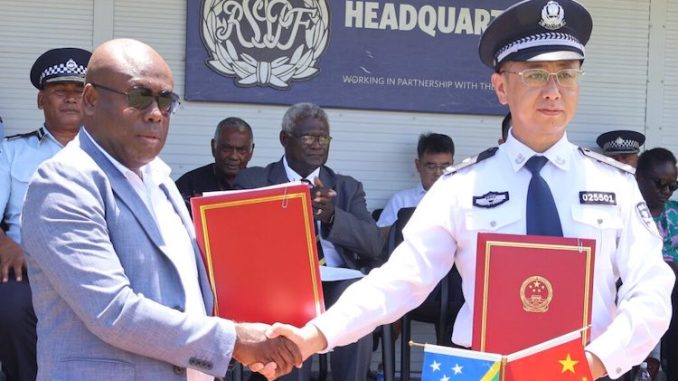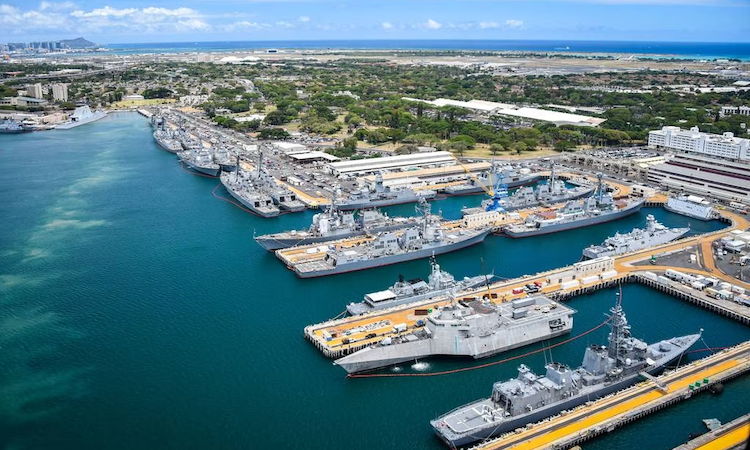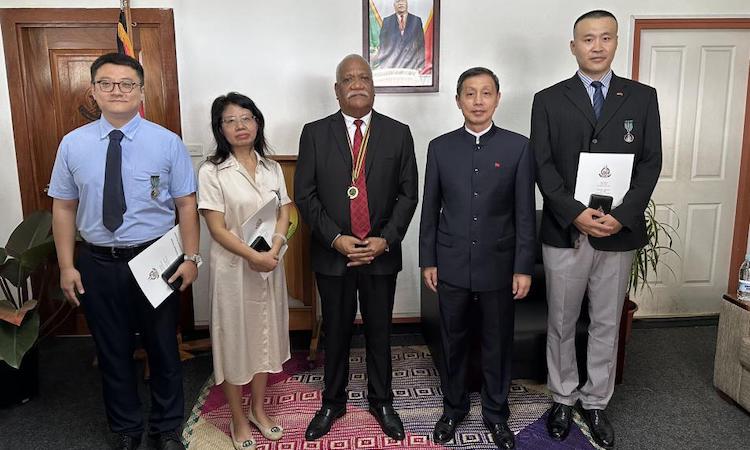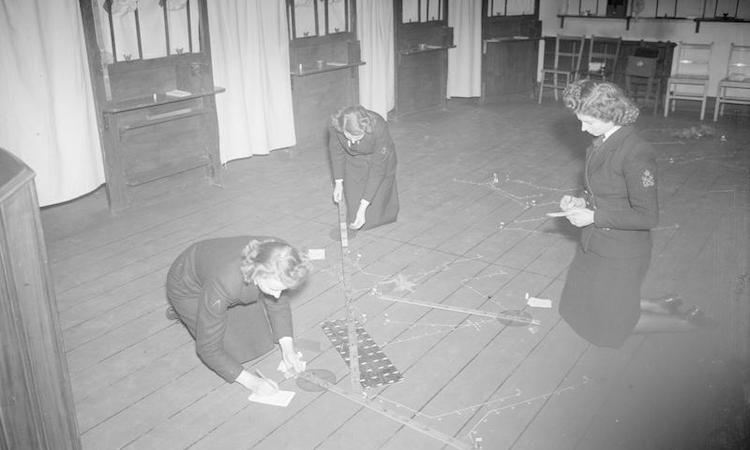
Melanesia is a potential setting for future hybrid conflict, and wargames may be a cost-effective way to simulate integration of civil and military information operations in the region, writes Ben Morgan.
The Indo-Pacific region is currently the frontline of Sino-American competition, parts of which, like Melanesia, are especially fertile ground for the use of hybrid tactics that might leverage local colonial history, cultural differences and weak governance against conventional military capabilities. Any military seeking to engage successfully in this region needs to understand these considerations and develop tactics and doctrine that will win – not just the kinetic phase of war but also the information battle.
In 2014, Robert Haddick wrote Fire on the Water China: America and the Future of the Pacific, highlighting China’s challenge to America in the Indo-Pacific region. He discusses America’s carrier task groups that for generations have dominated sea power, but argues their supremacy is waning. Although expensive, a carrier task group provides formidable power projection, being able to move quickly to a trouble spot, defend itself from most threats, and strike thousands of kilometres into enemy territory.
If it is to compete with the United States, China needs to develop a credible strategy to defeat carrier task groups, such as developing long-range anti-ship missiles and anti-ship ballistic missiles that can be produced in vast numbers and at relatively low cost. Haddick’s book identified that the threat posed by China’s ability to swamp an American carrier battlegroup with accurate long-range missile fire is credible. This creates an exclusion zone around missile defended land, within which a carrier task group is at extreme risk.
This strategy, ‘Area Denial,’ is a keystone of China’s conventional war-fighting doctrine. By denying America’s carriers access to an area of operations, China can compete there militarily, with ground or naval operations taking place under a protective ‘umbrella’ of precision-guided missiles.
Read it in the Line of Defence Magazine digital edition…
How war-fighting doctrine shapes Pacific diplomacy
Area denial drives diplomacy in the region, both sides working furiously to develop a network of diplomatic relationships that provide access to land. Land is rare in the Pacific Ocean, and vitally important because it cannot be sunk, providing bases for ships, submarines, aircraft, drones, surveillance assets and precision-guided missiles.
The US is responding by developing doctrine and new approaches to counter China’s area denial strategy. The US Marine Corps, for example, is creating Littoral Combat Regiments (LCR) designed to disperse and fight within China’s area denial zone. The US Army is developing the Multi-Domain Task Force (MDTF), a formation designed to provide long-range surveillance, precision-strike and resources to dominate the information battle and support close combat forces. Likely working ‘hand in glove’ LCRs and MDTF will require forward bases and intimate knowledge of potential areas of operation.
Melanesia, the hottest real estate in the Pacific
Sino-US competition in Melanesia, an area characterised by young nations and relatively weak institutions of government, is intense. Melanesia’s political instability and history of internal violence create the potential for flash-points in the Indo-Pacific Region. A small conflict could start with little warning and with few of the diplomatic or political controls expected in other parts of the world.
Melanesia provides areas for bases with the potential to dominate Australia’s northern maritime domain.
As the US’ key ally in the South Pacific, Australia provided a secure base for America’s push north against the Japanese in World War Two. In March this year, the Sydney Morning Herald published a series of articles titled Red Alert, in which a team of experts highlighted the risk of war with China and the potential role Australia might play supporting any future American campaign in the Pacific. This included providing military forces for any coalition and logistics support.
As the key US ally in Melanesia, Australia has built and maintained relationships with its island neighbours. However, in recent decades Australia’s influence in the region has declined and China has developed stronger relationships with Melanesian nations.
This trend was highlighted in 2022, when Solomon Islands signed a secret security agreement with China. Recently reported activity includes Chinese training support for the Royal Solomon Islands Police Force, the announcement of Solomon Islands’ intention to develop a new defence force and, if Al Jazeera reporting is correct, the secret importation of firearms from China. Activity of great concern to Australia and the United States.
Added to this, recent political instability in Vanuatu saw the removal of a pro-US government and the election of a more pro-Chinese one – a political process supported by the deployment to Vanuatu of Chinese police ‘experts’ and equipment. In Papua New Guinea, where rule of law is tenuously thin, a recent defence agreement with the US was criticised by pro-Chinese politicians. This nation is also struggling with Bougainville’s desire to be independent, an issue with a long and bloody history.

Multinational ships moored at Pearl Harbour, Hawaii, during RIMPAC 2022. Courtesy US Navy.
Recent lessons
Looking at recent conflicts around the world, we can see a variety of the emerging trends ranging from how drones are deployed on the battlefield to the integration of open source and military intelligence, to the increased use of precision-guided weapons. Two lessons stand out:
- The increasing hybridisation of war, including the use of proxies and the increasing role of information operations to shape battlefield conditions.
- Insight for forward planning, especially the difficulty that conventional military planners experience appreciating the information domain.
Both are likely to apply in a future Melanesia conflict but within a unique historical and cultural context.
In this context, Anglophone or European forces deployed into Melanesia, for example, would carry the burdens of colonial history, and be challenged in their ability to understand complex local cultures. Such factors provide opportunities for mistrust that an opposing force might leverage in the information domain – a force multiplier in hybrid conflict.
Thinking about future conflict in Melanesia
While direct confrontation between China and the United States is unlikely given its potential cost, there remains the possibility that a conflict in the area could escalate into kinetic war-fighting via proxies.
Solomon Islands, for example, is centrally located in Melanesia, and well positioned as a base to support potential de-stabilisation operations across the archipelago. In addition to developing a closer defence relationship with China, Solomon Islands Prime Minister Manasse Sogavare recently stated his intent to create a defence force, a process that is likely to be supported by China.
In a worst-case scenario, this new force could develop as a proxy available in the Melanesian region with good local knowledge, community relationships and – most importantly – able to be presented within the information battle as local and legitimate. Perhaps, such a force could work with ‘advisors’ or with private security contractors ‘protecting’ Chinese investments, increasing its capability.
Melanesia’s complex geography and political instability create a potential tinderbox. Hybrid operations combining the use of proxies, pseudo-military forces and information operations leveraging anti-colonial narratives and cultural mistrust are possible, creating a very complex environment for any force deploying into the region.

Chinese teachers awarded Vanuatu Medal of Honour in July. Image: Chinese Embassy Port Vila.
Gaining insight and forward planning – A not so new approach
Defeating hybrid operations requires a range of civil and military skills and insight that are difficult to acquire and maintain in conventional military organisations. Ukraine teaches us that complete integration of civil and military information is an enabler, and that omnipresent access to information allows people outside the military to provide useful insight.
An example of this enabler is a United States Marine Corps University wargame that was published and analysed prior to the onset of the Ukraine War. The most famous analysis of the wargame is by Alex Vershinin inan article published on the War on the Rocks blog titled Feeding the Bear: A Closer Look at Russian Army Logistics and the Fiat Accompli.
In this article, Vershinin used the wargame to successfully predict the limits of Russia’s logistics system, contesting the idea that Russia could easily seize Ukraine – an important insight at odds with conventional military analysis of Russian capability prior to the war. The US’ offer to evacuate President Zelenskyy reflected a conventional military analysis that had over-estimated Russia’s capabilities.
Another famous example of tactical level wargaming is discussed in Simon Parkin’s A War of Birds and Wolves, which tells the story the Royal Navy’s Western Approaches Tactical Unit (WATU), established during the Battle of the Atlantic in World War Two. During this critical existential battle the Royal Navy established a ‘battle lab’ staffed by WRENS (Women’s Royal Naval Service) naval auxiliaries to wargame anti-submarine tactics.
WATU developed a system of contested wargames in which escort commanders ‘played war’ against an enemy commanded by WRENS (some of whom were talented mathematicians able to conduct statistical analysis of potential courses of action). The programme provided an opportunity for escort commanders to work together in a consequence-free environment, testing tactics and building relationships with their command teams. WATU also developed new tactics that helped stop the German U-Boat force starving Britain into submission.
A WATU success was a manoeuvre used by escort forces nicknamed ‘Raspberry.’ The tactic was at odds with contemporary escort tactics, but when used in action it proved highly effective. The WRENS playing the U-boats developed the idea from their observation of tactics and experience playing opposition. They brought new perspectives to the discussion and the WATU process allowed these ideas to be tested using both wargames and operational analysis.
History evidences the usefulness of wargaming in conventional operations from Normandy to Desert Storm. It follows that wargaming is also likely to provide significant opportunities for the analysis of hybrid operations.
By their very nature hybrid operations require a range of skillsets, like political analysis, local cultural knowledge, communications, engagement and relationship management, that militaries struggle to develop. Leading larger militaries are already experimenting with incorporating these capabilities. The UK Ministry of Defence’s Wargaming Handbook is supported by a Influence Wargaming Handbook published in July this year.
Simulating integrated hybrid operations involving a complex and political information domain is new ground for most militaries, and Melanesia is an especially complex environment. Its geography is difficult and has produced a range of sophisticated indigenous cultures that have diverse perspectives and politics that are often difficult for outsiders to operate within. Wargames may be a cost-effective way to simulate integration of civil and military information operations in this environment.

Members of the Western Approaches tactical Unit conducting a war gaming exercise. Image: Imperial War Museums.
Making military wargames more effective
Conventional militaries tend to be ‘closed shop’ in that training activities avoid using outsiders and can sometimes be contrived to ensure results suit a particular doctrinal approach. Mitigating these factors requires two key actions. First, using external resources to develop simulations and secondly, making all simulations contested.
Most militaries use wargaming extensively, often as a methodology to assess courses of action during the staff planning process. It is less common to analyse new environments and develop tactics using contested wargames, and even less so using non-military inputs. The risk of ‘losing’ to outsiders is too high. But, given the blurring the line between civil and military operations in the context of hybrid conflict, it may be time to include a more diverse range of outsiders familiar with cultural, media and political considerations.
Pacific nations like Australia and New Zealand are well-placed to become centres of excellence for this type of experimentation. Experimental wargames are not resource intensive, and both nations have deep relationships in the Pacific and have diverse reservist communities that could be used to recruit people with key skills and experience.
Contested wargames not only provide an excellent opportunity to challenge inherited doctrine and develop solutions for future threats, but they also provide an opportunity for nations like Australia and New Zealand to use their regional advantages to play an important role.
*Ben Morgan writes about defence, contributing regularly to The Daily Blog and can be found on Substack.





